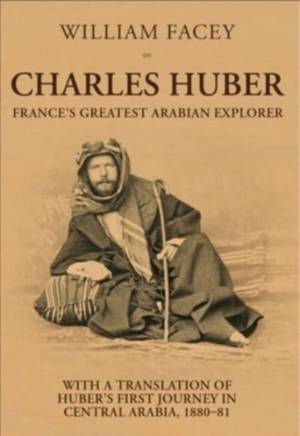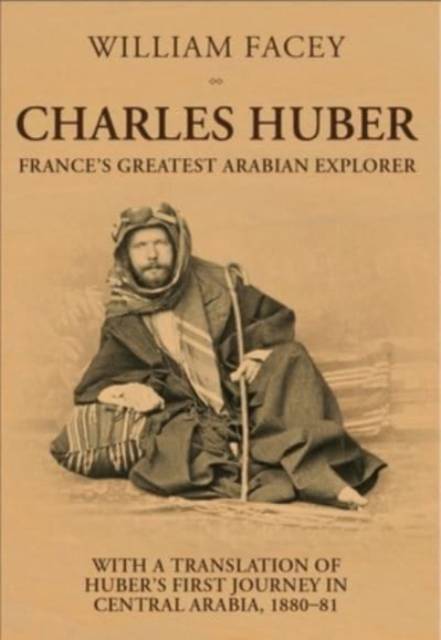
- Retrait gratuit dans votre magasin Club
- 7.000.000 titres dans notre catalogue
- Payer en toute sécurité
- Toujours un magasin près de chez vous
- Retrait gratuit dans votre magasin Club
- 7.000.0000 titres dans notre catalogue
- Payer en toute sécurité
- Toujours un magasin près de chez vous
44,45 €
+ 88 points
Description
The French-Alsatian geographer Charles Huber (1847-84) achieved fame as one of the 19th century's great Arabian explorers. On his two heroic journeys between 1880 and 1884, he pioneered the scientific mapping of inland Arabia and made some of the earliest records of ancient North Arabian inscriptions and rock art. His tragic murder in 1884 meant that he published little, and the only connected narrative that he managed to write was of his first journey in 1880-81. This highly significant document of Arabian exploration has not been published since 1885, and is presented here for the first time in English translation.
Despite Huber's great posthumous reputation, almost nothing has been written about him. William Facey's biographical introduction fills this void, revealing much that was hitherto unknown about Huber's complex and risk-taking personality, and about his colorful life as a fervent French patriot coming of age in Strasbourg during a time of Franco-German conflict.
New light is shed on the dates and itinerary of Huber's first Arabian journey, an epic quest of some 5,000 kilometres on camelback requiring immense fortitude. For this he used Ha'il as a base before traveling with the pilgrim caravan to Iraq and thence to Syria. The focus then shifts to his return to Arabia in 1883 with Julius Euting, the eminent German Semitist, and the twists and turns of their unsuccessful collaboration. Having parted company with Euting at the great Nabataean site of Mada'in Salih in the northern Hijaz, Huber went back into central Arabia before making a dangerous journey to Jiddah. He was murdered shortly after, on 29 July 1884, by his guides on the Red Sea coast.
Finally, the affair of the Tayma Stele, the celebrated Aramaic inscription now in the Musée du Louvre, comes under the spotlight. In a new analysis of this notorious Franco-German imbroglio, the prevailing idea that Huber first saw it in 1880 is held up to scrutiny, and Euting at last given his due for its discovery in 1884.
Despite Huber's great posthumous reputation, almost nothing has been written about him. William Facey's biographical introduction fills this void, revealing much that was hitherto unknown about Huber's complex and risk-taking personality, and about his colorful life as a fervent French patriot coming of age in Strasbourg during a time of Franco-German conflict.
New light is shed on the dates and itinerary of Huber's first Arabian journey, an epic quest of some 5,000 kilometres on camelback requiring immense fortitude. For this he used Ha'il as a base before traveling with the pilgrim caravan to Iraq and thence to Syria. The focus then shifts to his return to Arabia in 1883 with Julius Euting, the eminent German Semitist, and the twists and turns of their unsuccessful collaboration. Having parted company with Euting at the great Nabataean site of Mada'in Salih in the northern Hijaz, Huber went back into central Arabia before making a dangerous journey to Jiddah. He was murdered shortly after, on 29 July 1884, by his guides on the Red Sea coast.
Finally, the affair of the Tayma Stele, the celebrated Aramaic inscription now in the Musée du Louvre, comes under the spotlight. In a new analysis of this notorious Franco-German imbroglio, the prevailing idea that Huber first saw it in 1880 is held up to scrutiny, and Euting at last given his due for its discovery in 1884.
Spécifications
Parties prenantes
- Auteur(s) :
- Editeur:
Contenu
- Nombre de pages :
- 448
- Langue:
- Anglais
Caractéristiques
- EAN:
- 9781911487678
- Date de parution :
- 15-09-22
- Format:
- Livre relié
- Format numérique:
- Genaaid
- Dimensions :
- 155 mm x 242 mm
- Poids :
- 1075 g

Les avis
Nous publions uniquement les avis qui respectent les conditions requises. Consultez nos conditions pour les avis.






